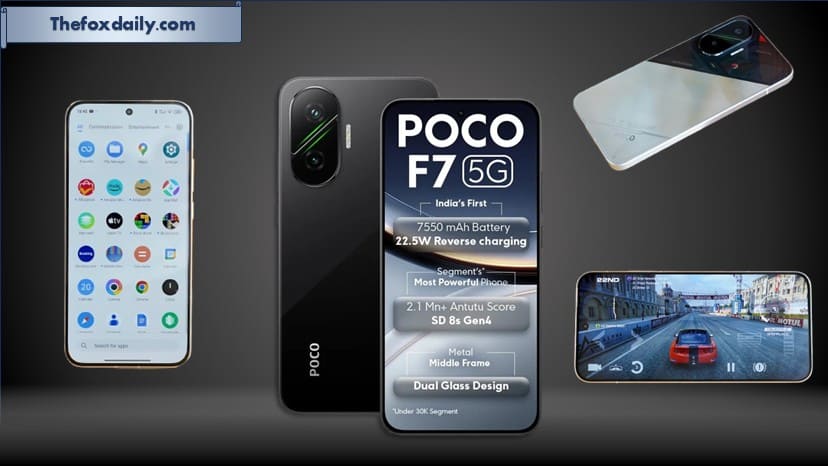
Poco F7 review: price and availability
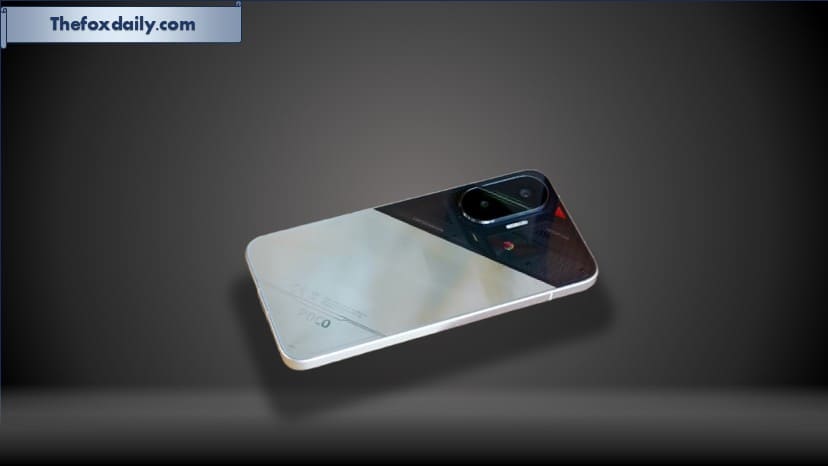
- Released in June 24 2025 for £389/$399 (12GB/256GB model)
- 12GB/512TB model costs £429/$449
- Not available in US or Australia
On June 24, 2025, the Poco F7 went on sale in the UK and around Europe.
The starting price for 256GB of storage is £389/$399/. The step-up 512GB variant costs £429/$449 and has the same 12GB of RAM. Despite not selling its phones to the US, Xiaomi consistently offers dollar pricing.
It’s encouraging to see that the Poco F7 is now between £10 and £20 less expensive than the Poco F6.
Additionally, it means that the phone is more competitive with the Samsung Galaxy A36 and the Honor 400 and undercuts competitors like the Google Pixel 9a and the Samsung Galaxy A56 by over £100. Another notable rival is the £449 Nothing Phone (3a) Pro.
If you’re quick, you can get the Poco F7 for an Early Bird discount of £70, as is frequently the case with Poco phones.
- Value score: 4.5 / 5
Poco F7 review: specs
| Header Cell – Column 0 | Header Cell – Column 1 |
| Dimensions: | 163.1 x 77.9 x 8.2mm |
| Weight: | 215.7g |
| Display: | 6.83-inch 1.5K (2772 x 1280) up to 120Hz AMOLED |
| Chipset: | Qualcomm Snapdragon 8s Gen 4 |
| RAM: | 12GB (LPDDR5X) |
| Storage: | 256GB / 512GB (UFS 4.1) |
| OS: | Android 15 with HyperOS 2 |
| Primary camera: | 50MP 1/1.95-inch sensor w/ OIS |
| Ultra-wide camera: | 8MP sensor |
| Front Camera: | 20MP sensor |
| Battery: | 6,500mAh |
| Charging: | 90W wired |
| Colors: | White, Black, Cyber Silver Edition |
| Row 13 – Cell 0 | Row 13 – Cell 1 |
Poco F7 review: design
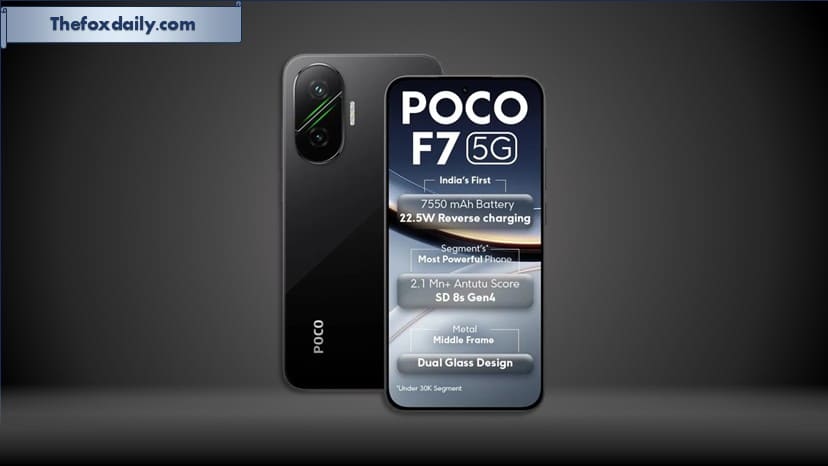
As is frequently the case with Poco phones, if you act quickly, you can get the Poco F7 for £70 off the Early Bird price.
- Another big, flat Poco design
- Cyber Silver Edition has gaming phone vibes
- Impressive IP68 dust and water resistance
The Poco F7, which comes after the Poco F7 Ultra, has another large, flat design. It weighs 216g and measures 163.1 x 77.9 x 8.2mm, so you can always tell when it’s in your pocket.
It has a more upscale look even though it is significantly larger and heavier than the Poco F6 that came before it. The frame is made of an aluminum alloy, while the back cover is made of glass rather than plastic.
It’s also a difficult cookie. Xiaomi is making noises about the phone’s bending resistance rating of up to 70kg², but the flagship-level IP68 dust and water resistance is a welcome return. It should be good and resistant to those “plonk yourself down with phone in back pocket” situations, but I didn’t dare test it.
The Poco F7’s appearance is similar to that of the iPhone, with curved corners and dead-flat surfaces. At least in photos, the black and white models are elegant, albeit a tad dull.
But neither of those models were delivered to me. I chose the limited Cyber Silver Edition instead, which totally changes the narrative: it’s not dull at all, even though it looks a touch cheesy.
Xiaomi has divided the phone’s rear at a jaunty angle, giving the top half a printed circuit board appearance and the bottom half (approximately) a shining silver finish. Xiaomi shouldn’t necessarily encourage this kind of linkage because it is somewhat reminiscent of a gaming phone like the Redmagic 10S Pro.
Yes, it shouts “performance,” but it also makes mature adults feel awkward anytime they use their phones in public. Unfortunately, we didn’t see much of Poco’s trademark color experiments with yellow, which may be a great way to make it stand out from the throng.
To put it simply, the Poco F7 is a fingerprint magnet due to its overall reflectiveness. For the record, taking pictures of it is an absolute nightmare.
- Design score: 3.5 / 5
Poco F7 review: display
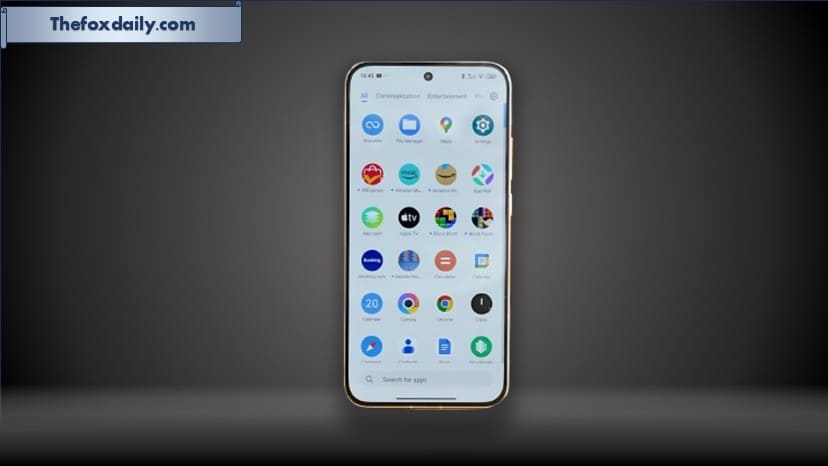
The Poco F7 is a fingerprint magnet due to its overall reflectiveness, to put it mildly. For the record, it’s also a complete nightmare to take pictures of.
- 6.83-inch AMOLED (2772 x 1280) with 120Hz refresh rate
- Decent 3200 nits peak brightness, 1700 nits HBM
- Well calibrated colours
Xiaomi’s low-cost sub-brands consistently produce superb, well-balanced AMOLED screens, and the Poco F7 continues to lead the field.
At 6.83 inches, it is larger than the Poco F6 from last year and the Poco F7 Ultra from this year. Its 2772 x 1280 “1.5K” resolution is crisp and clear.
This screen, like its Ultra sibling, has a maximum brightness of 3200 nits in limited HDR circumstances, which is better than the Poco F6’s 2400 nits. In high brightness mode, it achieves a slightly lower (though still respectable) 1700 nits than the Ultra, which will activate when it is exposed to direct sunlight.
As one might anticipate, the maximum refresh rate is 120 Hz. These days, we expect that even from low-cost phones—unless you’re referring to Apple.
Those previously mentioned rugged credentials probably only go so far because this screen is covered in Corning Gorilla Glass 7i instead of the Poco F7 Ultra’s reinforced “Poco Shield Glass.”
Overall, you can’t ask for more in a mid-range phone than its large, bright, sharp, and color-accurate display.
- Display score: 4 / 5
Poco F7 review: cameras
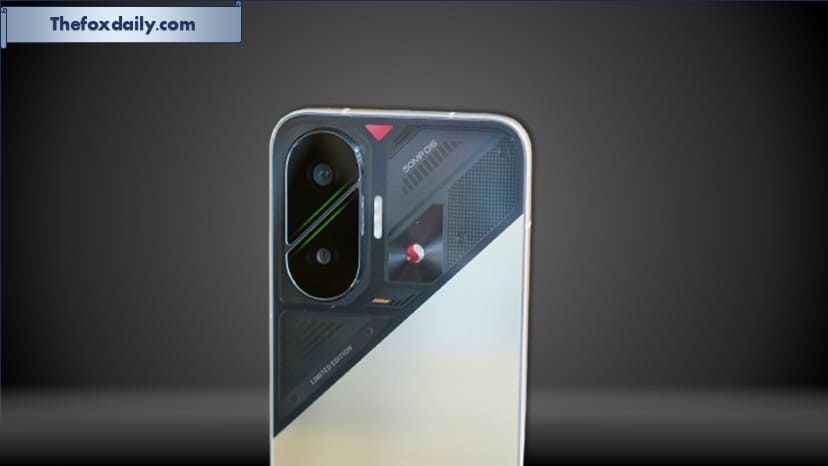
All things considered, this is a large, bright, sharp, and color-accurate display—about all you could want in a mid-range phone.
- 50MP main sensor produces solid but unspectacular shots
- 8MP ultra-wide
- No telephoto
- 20MP front camera
As far as I can tell, the Poco F7 shares the same basic camera configuration as the Poco F6 from the previous year and the less powerful Poco X7 Pro.
Thus, a 50MP SonyIMX882 sensor with a broad f/1.5 aperture is in the center of the dual camera setup. A modest 8MP ultra-wide and a 20MP front camera are also included. A specialized telephoto camera does not exist.
It should come as no surprise that our observations about the Poco X7 Pro camera are generally applicable here. Although the features are identical, the Poco F7 does benefit from having a Snapdragon 8s Gen 4 processor with its improved image processing.
In other words, you’ll get crisp, brilliant photographs with lovely, rich colors in well-lit conditions. There is a tinge of grain to those dark skies, and while the shots are solid after the light fades and Night mode is activated, they are not quite as clear as I would have preferred.
Don’t count on the 8MP ultra-wide to perform miracles. It clearly lacks the main sensor’s level of contrast and detail, and Xiaomi’s slightly over-processed appearance is an attempt to make up for its inherent flaws.
At 2x, zoomed shots are fine, making good use of the additional pixels from that lead sensor with minimal grain. However, at 5x, things begin to become hazy, and at 10x, they become unusable.
Of course, this has AI features. The well-known tool for erasing background elements is called AI Erase. AI Image Expansion really makes educated guesses about what might be outside the frame and accurately, if inaccurately, doodles it in. AI Sky, as the name implies, allows you to alter the scene to a cloudier or sunny day, changing the tone accordingly.
AI Beautify, meanwhile, offers the dubious ability to ‘improve’ your personal looks, removing pores and blemishes (wrinkle removal requires downloading), and altering your body shape. It can even pimp up your pets. Suffice to say, beyond giving it a quick test, I wanted none of it.
Once you reduce the default beautifying effect to zero, the 20MP front camera’s selfie quality is sufficient. Although skin tones are portrayed very naturally and the detail level is sufficient, it had trouble with dynamic range on bright days.
The Poco F6 returns to 4K video at 60 frames per second, and the video I recorded was passably fluid but not particularly so.
- Camera score: 3 / 5
Poco F7 review: camera samples


With the Poco F6, 4K video at 60 frames per second is back, and the video I recorded was passably smooth but not particularly strong.
Poco F7 review: performance

- New Snapdragon 8s Gen 4 is a strong performer
- 12GB RAM as standard
- 256 or 512GB of storage
The Snapdragon 8s Gen 4 processor is an intriguing choice made by Xiaomi. This new chip produces performance that is essentially flagship-level but falls far short of the Snapdragon 8 Elite’s dizzying heights.
It’s amazing to find this chip in a phone that costs £389 because nobody else uses it in its Phone (3), which will cost about £800.
It easily outperforms the Pixel 9a (and the Pixel 9 Pro, for that matter) in terms of raw CPU performance in the Geekbench 6 benchmarking tool, and it completely destroys the Samsung Galaxy A56.
Both of those competing phones outperform the Poco F7 in on-screen testing, indicating that GPU performance measured using the GFXBench tool is not as remarkable. It’s important to remember that Xiaomi’s phone has a crisper display than both of those phones, which naturally degrades GPU performance.
The most important point is that it is more than capable of handling the task of gaming. In fact, it can smoothly play the console racer Grand Theft Auto: Legends, which is often only playable on high-end phones.
Regardless of whether you choose 256 or 512GB of storage, it’s good to see Xiaomi has chosen to use a fixed 12GB of RAM.
We should also emphasize that the business is cooling the aforementioned chip with “the biggest Loop Heat Pipe ever used in a Poco device” using a 6000mm² 3D Dual-Channel IceLoop System. After completing those GPU tests, I did notice that the phone heated up a lot, but this is normal for a task that demands a lot of processing power, and it happened on one of the warmest days of the year.
- Performance score: 4.5 / 5
Poco F7 review: software

It’s also important to add that the business uses “the biggest Loop Heat Pipe ever used in a Poco device” in their 6000mm² 3D Dual-Channel IceLoop System to cool the chip in question. Even though it was one of the hottest days of the year, I noticed that the phone heated up a lot after completing those GPU tests, which is normal for a task that demanding.
- Clumsy UI with lots of bloatware
- 4 years of OS updates and 6 of security patches
- Hit and miss AI provision
Although Xiaomi may have tried to do something slightly new with the Poco F7’s hardware, the software is recognizable.
That’s quite normal—no manufacturer drastically alters the user interface between models—but it also means that all of my previous complaints about Xiaomi’s HyperOS (and before that, MIUI) are still valid.
For the record, Android 15 is being layered with HyperOS 2. Similar to the Poco F7 Ultra, this user interface reacts quickly when a half-decent processor is used, as it is in this case.
Although the user interface is well-tuned and highly customizable, HyperOS nevertheless irritates users with a minor but recurring lag when scrolling from the Google Feed back to the main home screen. It has a ton of extra apps, both from third-party developers and Xiaomi’s own stable.
The Temu shopping app, Facebook, Spotify, Microsoft OneDrive, Netflix, and the Booking.com app were all running on the second home screen even after I painstakingly deselected every one of Xiaomi’s “Recommended apps” during the setup process, all of which look incredibly awful.

There are more in the form of AliExpress, Amazon Music, Amazon Shopping, TikTok, and a few incredibly simple games when you open the app tray.
Xiaomi has a peculiar theme store of its own. In some ways, it offers more options for wallpaper and lock screen customization than almost any other manufacturer. However, not all of material is available for free download, and there is a ton of crap in there.
It’s still harder than it should be to find some simple system alternatives to the default wallpaper, and HyperOS is rife with friction.
Xiaomi is providing six years of security fixes and four Android OS upgrades, just as the Poco F7 Ultra. All things considered, it’s a rather good clause that covers the phone’s anticipated normal lifespan and more. It does not, however, live up to the lengthy update commitments made by Samsung (six years) and Google (seven years).
The Poco F7 has many AI tools of various degrees of utility, just like the Ultra model. AI subtitles can transcribe meetings and calls, AI interpreters can translate calls in real time, and AI writers can summarize text. There’s the usual suite of photo editing tools (after you’ve installed the relevant plug-ins), and Google Gemini is only a long power button press away.
For manufacturers, a lot of this has turned into a box-ticking exercise, and this isn’t the most frictionless or straightforward solution we’ve ever seen. Having said that, there is no doubt that those AI boxes have been checked.
- Software score: 3 / 5
Poco F7 review: battery life

It’s not the most logical or smooth solution we’ve ever seen, and a lot of this has turned into a box-ticking exercise for manufacturers. Having said that, those AI boxes have definitely been checked.
- Genuinely huge 6500mAh battery
- Up to 90W wired charging
- No wireless charging
Having a 6500 mAh battery is one of the Poco F7’s most notable features. Compared to the Poco F6’s 5000mAh battery, that is a significant boost.
This is indeed the biggest phone battery I’ve ever seen, save from the Red Magic 10S Pro and its predecessors, which were specialized gaming phones.
Even though it’s a brute force method, it works well to increase the phone’s endurance. After using the screen for three hours and forty-five minutes on a typical day with moderate usage, I had 70% left over, which would last me a full second day without any stress at all.
The Poco F7 still had 29% left at the conclusion of a lighter second day with an hour less screen time, and yes, I managed to get through the entire night without plugging in my phone.
Like its predecessor, the Poco F7 is capable of 90W wired charging. According to Xiaomi, it will go from empty to 80% in 30 minutes, but only if the Quick Charge feature is on; otherwise, you will need to manually toggle it in the Settings menu.
I discovered that the phone would only reach 60% in 30 minutes when it was brand-new and in its default setting. Considering the battery’s enormous size, that’s still quite fantastic.
- Battery score: 5 / 5
Should I buy the Poco F7?

Upon opening the phone in its original setup, I discovered that it would only reach 60% within 30 minutes. Considering the size of that battery, that’s still quite good.
| Attributes | Notes | Rating |
| Design | The Poco F7 is very well-built for its price, with IP68 certification and a high quality materials, though it’s also quite big, and the Cyber Silver Edition version is a little chintzy. | 3.5 / 5 |
| Display | The Poco F7’s 6.83-inch OLED is big and bright, with a shark ‘1.5K’ resolution. | 4 / 5 |
| Performance | The Snapdragon 8s Gen 4 is a capable runner, outperforming most fellow mid-rangers and even some flagship phones. | 4.5 / 5 |
| Camera | Cameras have never been a priority with the Poco range, and the Poco F7 doesn’t bring anything meaningfully new or impressive to the table. | 3 / 5 |
| Battery | With a huge 6500mAh battery, the Poco F7 will be able to last most people two days, while 90W wired charging is more than decent. | 5 / 5 |
| Software | HyperOS 2 is too cluttered, with way too much bloatware, but it is at least quite customisable. | 3 / 5 |
| Value | The Poco F7 is even cheaper than its predecessor, and undercuts some of our favourite mid-range phones by more than £100. The level of build quality and performance is impressive for the money. | 4.5 / 5 |
You want to achieve excellent results on a tight budget. Few phones in the sub-£400 price range can operate this fast thanks to the latest Snapdragon 8s Gen 4 CPU.
You want a long-lasting phone. The Poco F7 boasts one of the largest 6500mAh batteries available, allowing for true two-day use.
You want a well-made, reasonably priced phone. The Poco F7 is a tough device with an IP68 certification and a glass and metal construction.
Having clean software is essential. Bloatware is abundant and HyperOS is busy.
You shoot a lot of photos. Although the Poco F7’s camera isn’t particularly poor, it is quite constrained, and you can get a better camera for the money.
You enjoy understated designs. Despite its sturdy construction, the Poco F7 is large and hefty, and the Silver variant has a somewhat cheesy appearance.
For breaking news and live news updates, like us on Facebook or follow us on Twitter and Instagram. Read more on Latest Reviews on thefoxdaily.com.





COMMENTS 0